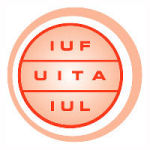Interbrew's Company Strategy Prior to Merger into InBev
Posted to the IUF website 01-Sep-2004Share this article.
In the 1990s Interbrew made numerous acquisitions including Labatt in Canada, in Central and Eastern Europe, China and South Korea, 20 acquisitions in 15 markets for some USD9bn. Its production volumes went from 15m hectolitres in 1992 to 72.4m hl in 1999. Its domestic Belgian business now accounts for less than 8 percent of the company's total volume, compared to 43 percent in 1992.
In 2000 Interbrew spent some $4bn to buy Whitehead and Bass breweries in the UK, demonstrating its commitment to become one of the world's biggest brewers. However UK anti-trust authorities blocked its acquisition of Bass in January 2001. Interbrew tried to salvage its GBP2.3bn investment in Bass, selling the Carling brand at a loss to Coors (USA).
2002 was a "transition" year because of the need to digest acquisitions. Beck's acquisitions in Germany was at too high a price and did not result in the increased export of Beck's to the USA that was expected (due to conflict with its Mexican business partner FEMSA). Interbrew, mainly owned by three wealthy Belgian families who still control its board of directors, went public in November 2000 so it could raise more capital for expansion. Former CEO Hugo Powell who came from its Canadian acquisition Labatt was fired because he paid too much for acquisitions and was too slow in integrating them into the business. He was replaced early in 2003 by the American John Brock, who came from Cadbury Schweppes where he specialized in integrating different segments of the business.
Under Brock Interbrew temporarily reduced its binge of acquisitions and tried to increase its profit margin on existing operations. However the financial media report that Interbrew's profit margins are still depressed, in part by increasing pension costs.
Interbrew calls itself the "world's local brewer", which means that it has strong local brands like Labatt's alongside its global brand Stella Artois. However it manages its business more and more centrally.
Interbrew's complicated merger with AmBev into InBev has created the largest global brewer. Click here for further information.
Union Situation at Interbrew
Key union leaders for contacts with the company in Belgium are the presidents of the two major Belgian federations of food and drink workers, Eric Delacluyse (CCAS-CSC) and Alfons de May (AHS-FGTB). The IUF works closely with the two Belgian unions, They have supported IUF educational activities for Interbrew workers in Central and Eastern Europe, and assisted the IUF in saving the brewery union in Montenegro that was in danger of being destroyed during a lengthy strike. There is an active Interbrew EWC, coordinated by the Belgian unions.
The Belgian unions have a long history of relationships with the company, and until recently had good access to its Leuven headquarters. In the last couple of years, as Interbrew became more global and its chief executives are no longer Belgian, they have had less access to top decision-makers.
The IUF helped the T&G last year in its struggle to keep the Boddington brewery open in Manchester, UK. The IUF maintains ongoing contacts with top human resources management, but Interbrew as it expands globally has become less sympathetic to union organization. Most Interbrew unions are affiliated to the IUF.
Interbrew has about 37,600 employees worldwide (prior to merger). Its sales were balanced fairly well between Western Europe (34%), North America (25%) and "emerging markets" of Eastern Europe and Asia(18%). Prior to merger, it had brewing facilities in 20 countries.
North America:
Canada: 8 Labatt breweries have 43% market share. The main union is the Brewery, General and Professional Works Union division of NUPGE, as well as the CSN and Teamsters in Quebec. Labatt locked out workers at its London, Ontario plant in January 2002. The Quebec federation CSN conducted a strike at the Montreal brewery in September 2003.
In the USA, the Rolling Rock brewery at Latrobe, Pa. is 70% owned.
In Cuba, the Bucanero brewery is 50% owned.
In Mexico, Interbrew previously owned 30% of FEMSA Cerveza, which has 6 breweries and a 43% market share (This has been sold back to FEMSA, and InBev and FEMSA are severing all relationships).
Labatt will be operated by AmBev following the merger. AmBev has promised no change in operations, but similar promises have not been kept in Latin American countries.
Asia:
South Korea, owns 50% of Oriental Breweries and has management control, 45% market share. However Interbrew has recently announced intent to sell its share.
In China, Interbrew is the third largest brewer with shares in 17 breweries in the southeast and in the coastal region around Shanghai.
Western Europe:
In Belgium it has 4 breweries and a 56% market share. Both union federations CCAS-CSC and AHS-FGTB well represented.
In France, it has a brewery at Armentieres and a 10% market share, with a union presence including the FNAF-CGT.
In Luxembourg its single 79% owned brewery has a 44% market share.
In the Netherlands, 2 breweries are left after Breda was closed in 2002. It has a 16% market share. Workers are represented by the BG-FNV.
UK; 3 breweries (mostly former Whitbread), 11% market share, represented by T&G. Most of Bass breweries sold to Coors. Resistance by T&G to partial closure of Boddington's brewery in Manchester was successful in maintaining most jobs. The Bass Ulster Brewery in Belfast is being closed.
In Germany Interbrew owns the Becks brewery, Diebels, and recently acquired Spaten. It has only a small market share but expects to export of Beck's as a global brand. The NGG represents brewery workers in Germany.
ECE:
Bosnia-Herzogovina, 1 small brewery (Uniline), 59% owned, no union
Bulgaria, 3 breweries, 31% market share, 85% owned, 320 of 900 employees in Trade Union of Brewers.
